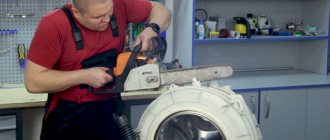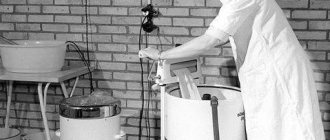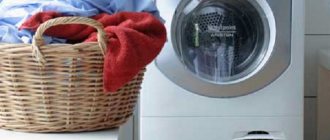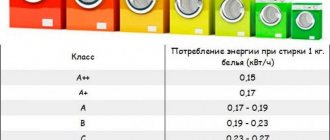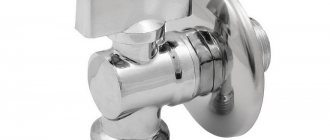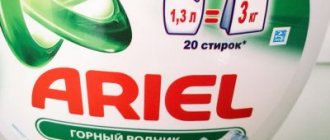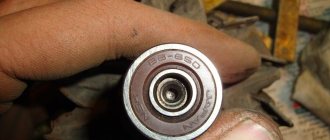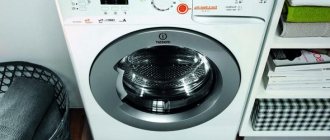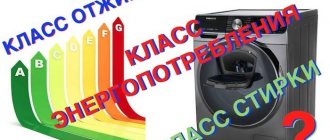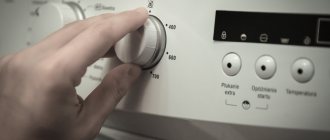When choosing a washing machine, every buyer, without exception, will be attentive and scrupulous in their choice. In particular, it will focus on the model, functionality, warranty period, and the like. What else should a consumer know when choosing a washing machine? Actually, the material from which its most important parts are made is no less important. In particular, we are talking about a tank, which can be made of different materials. In this article we will take a closer look at which material is better for a washing machine tank.
Having learned more information about this part, it will be easier to make a choice, taking into account its characteristics.
What other plastic options are used?
Polynox is widely used in Bosch washing machines. But not only. There are other manufacturers who use analogues of this material.
The main polymer materials are carborane, carbotec, carferon, silytek and polynox. For each of the listed materials, the main substance is a special polypropylene. It contains calcium carbide, which significantly improves the strength of the material. As a result, the material becomes resistant to substances from detergents. The less different elements in the plastic are added, the worse the plastic tank is.
Polyplex is the most popular analogue. It is not afraid of rust, strong vibration and other things that pose a danger to metals. However, we must admit that if we compare it with other plastic analogues, it is still more fragile.
In Electrolux it is customary to make tanks from Carboran. It is more durable. But also more expensive. And this cannot but affect the total cost of the goods. Carboran is a development of this company. In particular, Carboran is close in quality to stainless steel. It is just as durable, strong and reliable.
IMPORTANT! Electrolux has worked not only to increase strength, but also to ensure that the plastic does not absorb odors, so that it has better thermal insulation qualities and sound insulation. And Carboran is not afraid of aggressive chemicals.
Kandy considers it possible to use Silitek, which in its essence can be considered a complete analogue of Polynox, although it has some minor differences. He is not afraid of acidic and alkaline environments.
This is interesting: Which refrigerator is better, single-compressor or two-compressor: what are the differences, pros and cons
We will sort, sort and hand over
If in the previous paragraph we handed over the machine by total weight, that is, without sorting it into different metals, then in this section you will find a slightly different method. Instead of taking the entire unit to a collection point, you can disassemble it yourself and then sort the parts according to metal categories. For example, almost every machine has massive motors with windings containing up to 2 kg of copper, and in Moscow the price per kg of this metal reaches 360 rubles. You can also find other non-ferrous metals there. In general, you can earn some good money, but keep in mind that you will have to get really confused and spend a lot of time. Information about how much non-ferrous metal is in the washing machine on average:
- 1-2 kg approximately 432 rubles.
- 2 kg of aluminum – 160 rubles.
- 0.2 kg of zinc – 13 rubles.
- 20 kg of iron – 300 rubles.
- 0.1 kg of brass – 20 rubles.
If we add it up, we get around 925 rubles. Of course, this is more profitable than simply giving away the machine with its total weight. But it will take quite a lot of time, and it is still unknown which is more expensive. And, of course, it is obvious that the difference between revenues is quite small. Surely, residents of big cities would prefer to give away the machine for free, just to get rid of it and the hassle associated with it.
Types of drum perforation
Perforations are small holes on the surface of the drum through which water enters. The drum rotates during washing. Under the influence of centrifugal forces, the laundry is pressed into the perforation holes. This leads to rapid wear of things. Companies that produce washing equipment are trying to prevent laundry damage, so they are working to improve their equipment. This also applies to perforation parameters.
Each manufacturer uses its own types of perforation:
- Cellular. Such drums are produced by Miele. Perforation in the machines of this manufacturer is performed in the form of a honeycomb. The holes look like convex hexagons. The fabric in them is almost not tightened, i.e. the laundry is washed more carefully.
- Drip. Bosch produces drums with perforations in the form of drops. When the wool or silk mode is selected, the cylinder rotates in one direction, providing a delicate effect on items. If cotton or linen is loaded, the drum rotates in the other direction, providing more intensive washing.
- Pearl drum The pearl drum is produced by Hansa. The perforation in it is made in the form of hemispheres reminiscent of pearls. The manufacturer claims that thanks to this technology, wear of the laundry is prevented even at a drum rotation speed of 1400 rpm.
- Wave drum. The “wave” drum is a type of Pearl drum. The holes in it are also made in the shape of hemispheres. They bend in waves throughout the cylinder. The developer of this technology claims that such a drum improves the movement of laundry during washing. This allows you to get cleaner things. Wave drum prevents wear and tear of laundry.
- Diamond drum Machines with such drums are produced by Samsung. This technology differs in that the perforation holes are located in recesses made in the shape of a pyramid. The holes are small in size, preventing the fabric from being drawn into them.
Which drum is better
It's difficult to say which drum is good and which is bad. When choosing a washing machine, you should pay attention to different parameters - how much water and electricity the machine consumes, what is the functionality of the equipment, what additional options does the manufacturer offer. Last but not least is the cost of the unit.
- How to clean an automatic washing machine from scale and dirt inside the machine
- Washing machine pump repair
- Why doesn't the washing machine turn on?
- List of washing machines that have a collapsible drum
Summing up
In conclusion, I would like to say that the future fate of the machine, after purchasing a new one, is chosen by each owner independently. Depending on its condition, it can either be sold, donated, or sold for scrap. Of course, you can leave the old washing machine at home as a cabinet, but this option will suit few people.
When the machine works from repair to repair or fails completely, the user has no choice but to buy a new unit. But what to do with the old one? The easiest way is to simply throw it away, but some enterprising citizens are thinking about a different perspective. Is it possible, for example, to sell a washing machine for scrap and get some money?
Washing machine drum: perforated
On the side surfaces of any cylinder inside the tank you can observe many small holes called perforations. This is necessary for water to flow from the tank to the drum and back during washing. But sometimes such holes can affect the wear and tear of the laundry.
Why is this happening? The fact is that during washing, when the cylinder rotates, a centrifugal force acts on the things inside it, which seems to “press” them into these perforated holes. As a result, the fabric fibers wear out over time and the item wears out faster.
Important. At high spin speeds, fabrics wear out faster. Therefore, it is recommended to spin delicate items at the lowest speed, choosing the appropriate washing mode.
Manufacturers of washing machines are trying to change such situations for the better by developing special algorithms and operating programs for washing devices. By providing the best washing quality, they at the same time minimize the wear and tear of fabrics. For this purpose, manufacturers also make drums that have a special internal surface.
Honeycomb drums
Drums of this type were patented by Miele, so they cannot be found in washing machines from other manufacturers.
Features of Honeycomb Drums
The developers of this company turned their attention to the design of honeycombs, which are quite stable, although they are made of soft material. Manufacturers have used similar shapes for the surfaces of the cylinders of their washing units. They covered them inside with raised, specially stamped hexagons.
The perforation with such holes has a smaller diameter, which is why the washing solution lingers inside the drum for a longer time, and the fabric is practically not drawn into them, washing is much more gentle than usual. As the developers themselves say:
- cylinders of this type help reduce energy consumption;
- laundry is washed more carefully;
- There are no welded parts inside the drum, which means their service life is quite long.
Drip drums
The inner surface of this type of drum is not covered with honeycomb-like holes, but with special protrusions that are shaped like drops. This type of coating was developed by Bosch specialists. One side of these droplet protrusions is gently sloping, and the other is steeper. This coating principle is applied inside the drums, which are called VarioSoft. The developers have provided this:
- firstly, a delicate effect on fabrics (wool, silk) during washing when the cylinder rotates in one direction;
- secondly, a more intensive wash, removing all dirt on cotton or linen fabrics, when rotating the cylinder in the other opposite direction.
VarioSoft washing machine drums
Pearl Drum
"Pearl Drum" or pearl drum, designed for Hansa washing machines. It is named so because its internal surfaces are covered with protrusions in the form of hemispheres, similar to a scattering of pearls of different sizes. This was also done to prevent fabric fibers from being drawn into the holes on the surface of the cylinder. According to the developers, this perforation design should protect things from wear during spinning even at high speeds up to 1400 rpm.
Wave Drum
This type of perforation is a type of “Pearl Drum”, translated as “wave drum”. Its inner walls are covered with special hemispheres that bend in waves along the entire diameter. The developers claim that this design can improve the movement of laundry during washing inside the drum and protect fabrics from wear.
Diamond Drum
Samsung continued the idea of the Miele developers and created its high-tech advanced drum “Diamond Drum”, inside of which the perforations are located in small recesses resembling the shape of a pyramid. The reduced diameter of these holes prevents fabric fibers from being drawn through them, protecting items from wear and tear. Such “pyramids” are similar to the cutting of precious stones, which is why they got their name “Diamond Drum”.
Diamond Drum
Juicer
There are two options here:
- Using an old machine with a centrifuge and a washing compartment;
- Remaking a conventional barrel washing machine.
Let’s say right away that the first option is better, since it allows, with minimal modifications, to implement two processes in one device: chopping fruit and squeezing it. To do this, you will need a washing machine in which the activator is located on the bottom, and not on the side wall. Replacing it with three homemade strip steel knives, we get a fruit slicer.
The drain hole of the washing tank must be plugged.
There are few additional treatments for the second unit - the centrifuge. You need to install a stainless steel mesh in it (mesh size 1.5 mm, wire thickness 0.2 mm) so that it covers the side surface of the centrifuge.
After thoroughly rinsing the centrifuge, washing tank, hoses and pump with baking soda, you can make the first load.
The operating principle of this juicer is very simple. The fruits are washed and loaded in small portions (1/2 -1 bucket) into the washing tank (knives must be turned on). After 15-20 minutes of cutting, the engine is turned off and the crushed mass is transferred to a centrifuge (in portions of 3-4 liters). Turn on the centrifuge and squeeze out the juice.
Making a juicer from a barrel washing machine or automatic machine is much more difficult. In a barrel, a homemade centrifuge can become a “stumbling block”. Making it is half the battle; the main thing is to achieve perfectly accurate alignment. Without this, at high speeds it begins to vibrate strongly and it will be impossible to squeeze out the juice.
Here is a drawing of a working sample. The master had to work hard to reduce the runout of the centrifuge (the motor is suspended from the washing machine body on 6 springs). Of these, 3 balance the engine in a horizontal plane, and the other 3 push it upward. The body itself rests on an old car tire, which dampens vibration.
Advantages and disadvantages of plastic tanks
Manufacturers, of course, are working to reduce production costs. This may explain the fact that they started producing plastic tanks. Of course, buyers are always happy when prices drop. However, they still doubt that such tanks can be reliable and durable. First, we’ll look at the obvious advantages of plastic tanks.
— Plastic tanks are less susceptible to vibration when you wash. This also leads to a reduction in the noise level of the washing machine.
— Such tanks retain heat inside better. This eliminates the need to constantly heat the water. As a result, the washing machine's energy costs to heat water are reduced.
— Plastic is much lighter than metal. This reduces the weight of the washing machine and makes it easier to transport.
— Polynox and its analogues will not be damaged by moisture and will not rust, which leads to an increase in the period of its use.
— Plastic is cheaper than stainless steel. Cars with a plastic tank are cheaper compared to their metal counterparts.
There are many advantages, but there are also disadvantages.
Plastic is easier to damage. And while a stainless steel tank can survive impacts from hard foreign objects that accidentally enter the tank during washing, plastic can crack when hit at high speeds.
Please note: when your washing machine has a plastic tank, you need to check things very carefully. Damage from hard and sharp fittings is possible.
Also, when you repair the machine yourself or carelessly transport the machine, the plastic tanks may suffer from impacts.
If the transportation was carried out poorly, or you forgot to remove the special bolts before starting the machine, the integrity of the container may suffer. She will break. And nothing worse can happen. The car will simply become unusable. And then it will be necessary to replace the tank. Or you might even have to buy a new car.
However, manufacturers know what the shortcomings of their products are. That's why they are constantly improving the plastic formula. Modern laundry equipment is increasingly using plastic that is much stronger than that of their recent predecessors.
IMPORTANT! When the plastic is of high quality, then if you handle it carefully you can expect it to last for a quarter of a century.
This is interesting: Rating of the best Beats headphones of 2022 (TOP 5)
Basic ways to get rid of old equipment
In general, there are many more ways to get rid of an unnecessary washing machine than it seems. All of them are different in terms of financial costs/profits, and in the amount of time and effort. Here is a list of the main options:
- Recycle. The bottom line is that you personally take your unit to a specially designated place, where you also pay 1500 - 2000 for the procedure. This money goes towards transporting the machine to a special landfill and the recycling service itself.
- Sell or give away for free. Of course, this can only be done if the device is still in good condition. Some people will be happy to come and remove the car themselves if you offer it for free.
- Give it to the store. This refers to various promotions like “Changing the old for the new.” You can save some money and get rid of the equipment.
- Donate to an institution. Orphanages and any other similar institutions gladly accept any help. Household appliances are never superfluous, so why not do a good deed if your machine is still in good working order?
Well, if the home helper has already outlived its usefulness, of course, the most profitable thing to do is to sell it for scrap metal; as you can see, the content of valuable metals is quite high. Even if it’s not very convenient to transport, it’s still better than paying extra for disposal.
Features and purpose
Many washing machine owners mistakenly assume that the tank and drum are the same part in household appliances. A drum is a container into which dirty things are placed. It is always made of stainless steel. Tank is a container for the drum. Liquids, powders, conditioners and other laundry detergents are poured into it.
All this enters the drum through special pipes.
Tanks are:
- collapsible;
- non-separable.
The former consist of two halves connected to each other using fasteners, while the latter are a one-piece, non-separable structure.
The tank is an important part in any washing machine. Water is poured into it (depending on the machine model, from 30 to 60 liters). To avoid strong vibration during washing, spinning and rinsing, the tank is not rigidly attached to the body. To soften vibrations, springs are located in the upper part, and a shock-absorbing system is located in the lower part. For these purposes, manufacturers also install concrete counterweights on containers.
The washing machine tank takes on a colossal load. Water is heated in it, chemically aggressive laundry detergents enter here, and it can withstand sudden temperature changes. Therefore, the quality and durability of this part will depend on the type of raw materials used in the production of tanks. Let's look at the most popular materials used by manufacturers.
How much money if scrap metal?
The price at which you sell your washing machine directly depends on its weight. On average, washing machines weigh from 50 to 70 kg. The main mass of the machine is provided by counterweights.
Counterweights are elements that artificially weight a washing machine. They are hung in order to add more weight to the washing machine, to prevent it from swinging during the washing process. Made from concrete.
As it has already become clear to you, counterweights are of no interest to scrap metal acceptors. The metal itself in the machine is no more than 20–30 kg (depending on the model). On average, the price in Russia ranges from 4 to 9 rubles per kg. The highest price is presented in the capital and region, and as you move away, the price decreases. Having carried out simple mathematical calculations, we find that you can get 80–270 rubles for a washing machine. This is quite meager money, which can only cover the cost of removing the washing machine. And always remember about contamination! The washing machine will be clogged at about 10%, i.e. from the price or weight you
Plastic version
Which drum will do? Each company has a special one. All types of plastic used have their own characteristics. For example, carboran is close to stainless steel in terms of qualities such as durability, strength, and reliability. But its properties are surpassed in terms of thermal insulation and vibration reduction.
The main polymer materials are: carborane, carbotek, carferon, silytek and polynox.
For all of them, the main substance is a special polypropylene. It contains calcium carbide. It significantly improves the strength of the material and its resistance to detergents. The fewer different added elements in the plastic, the worse the plastic tank.
Advantages of plastic
- Does not corrode.
- Good in terms of durability.
- Modest mass.
- Does not absorb water.
- Reduces noise during drum rotations.
- Saving electricity consumption.
- Resistance to aggressive chemical elements.
Which is better to choose? Despite the existing strengths, modifications with plastic options, when compared with steel versions, break more often and are not resistant to mechanical influence. But today the development of plastic composition does not stop. And each company adds its own “zest” to this material. In this way, these plastic components of the machine gradually develop their strength and reliability. And when solving the dilemma of how appropriate a plastic container is in this technique, the answer is more positive. It is also worth noting the low cost of this material. And modern manufacturers are motivated to reduce the cost of devices with plastic tanks.
Weaknesses of plastic versions
As has already been noted, many companies are trying in every possible way to modernize and strengthen the plastic for their cars. But for now, this washing machine tank material is susceptible to splitting and is quite fragile. This is his main and only weakness.
If the machine is poorly transported or someone forgets to remove special bolts before starting, the integrity of the container may suffer. And she will simply break; there cannot be any worse consequences. And the car will no longer be able to be used. You will need to replace the tank or even buy a new car.
If the plastic is of excellent quality and if handled with care, it can last 20-25 years.
Purpose of the SMA tank
The washing machine tank cannot be assessed visually when purchasing. Therefore, you need to immediately find out about the material from which it was made.
Polynox tank
Do not confuse the tank and the drum. The laundry is placed in the drum, and it is this drum that rotates during washing. Tank is the container where the drum is placed. Water and detergents are poured there. This mixture enters the drum through special holes through the pipe.
The tank takes on a lot of load. The water heats up in it, aggressive chemicals get into it, and some object may accidentally fall out of the drum. These factors can significantly accelerate the failure of a part. To prevent this from happening, you should take care in advance of choosing a car with a suitable tank.
Do you turn off the water tap after washing?
Oh yes! No.
The drum is made of stainless steel. Tanks are made from the following materials:
- stainless steel;
- plastic;
Each of them has its own advantages and disadvantages and affects the price and life of the washing machine. If it breaks down, most often you have to replace the entire washing machine, so you should take your choice seriously.
Selling a washing machine for scrap
So, you've decided to sell your old washing machine for scrap. Initially, you need to decide how to deliver it to the collection point. This can be done in several ways:
- Take it out yourself. In this case, you will need to either independently or with the involvement of friends or acquaintances, load the old washing machine into the car and deliver it to a scrap metal collection point. When choosing this option, it is worth considering that there will be fuel costs. It is also necessary to ask someone for help.
- Use the company's services. By choosing this option, you won’t have to carry anything anywhere. The service will send a special car with loaders who will independently deliver the old washing machine to the collection point. It is worth noting that there is an additional charge for this. As a rule, the money received for the machine is enough to cover these expenses, but you are unlikely to make a profit.
It is impossible to clearly identify the best method. Both options have the right to life.
Metal tank
Metal, namely steel, which is coated with special enamel. Absolutely adapted for the washing process, but may be unstable to all kinds of impacts.
All kinds of impacts can damage the enamel, which over time will lead to significant destruction of the protective layer and cause corrosion (rust). Rust in its worms will slowly but surely lead to the formation of cracks and the tank will begin to leak. As a result, the tank will need to be replaced.
Therefore, it is not a very reliable material for a washing machine tank. Fortunately, they are almost never used in modern models. Therefore, when you have to replace such a tank with a new one, this can be a problem. Since production practically does not produce such units, there are no auxiliary parts for repair and replacement. Most likely, you will not have to repair, but buy a new washing machine.
Features of the enamel coating of tanks
In the recent past, manufacturers made cars with enamel tanks. However, their service life was short. As soon as the smallest crack appeared on the enamel coating, the metal underneath began to quickly rust.
The version of models with enameled metal has its own characteristics. Both positive and negative.
POSITIVE SIDES
— Works reliably, even if you place any laundry. — Enamel is a protective layer that prevents corrosion from appearing on the metal.
What material are the containers made of stronger? There is no clear answer to the question. During transportation, it is almost impossible to damage models with enameled metal. They do not crack even with large temperature changes.
NEGATIVE SIDES
- An impressive mass. — The container is defenseless against impacts.
Long periods of use lead to chips appearing on the enamel container. This is caused by impacts from foreign objects. The enamel begins to crumble in areas where there is damage.
IMPORTANT! Once the protective layer disappears, rust quickly covers the metal, leading to complete destruction. Some time will pass and you will begin to worry about leaks. In this situation, you need to replace the tank or buy new equipment.
We emphasize that containers from this option are practically no longer produced. As it turned out, there were too many accidents when using them. And in the production of tanks they began to use plastic or a stainless steel base.
Plastic tank
Plastic or polyplex. In principle, manufacturers improve this alloy in different ways, so the name of polymer materials may sound different. In terms of functionality it:
- somewhat isolates noise output when the drum rotates;
- to a certain extent reduce the level of electricity consumption;
- quite light in weight;
- does not leak;
- unlike metal, it does not corrode and is resistant to chemicals;
- optimal price.
Quite durable, but unlike metal it can be somewhat fragile. Although, manufacturers consider this material the most favorable and are constantly improving it. Its modification made the material closest to steel in terms of strength. Different types of plastic have slightly different properties: brittle, more durable. Among the segment of polymeric materials, special preference is given to carborane.
The service life of a plastic tank is approximately up to 30 years, and maybe more. This is several times less than what a stainless steel tank could serve, but overall an absolutely satisfactory service life.
Stainless steel tank
Stainless steel. A common material for making tanks for washing machines. It has been used for this purpose for quite a long time.
- Reacts well to contact with water - does not rust.
- This tank has increased strength and resistance to mechanical and chemical damage.
- Service life up to 100 years.
Of the minuses
- The weight of a stainless steel tank will be greater than that of a plastic tank, so it produces more noise.
- Low thermal insulation of metal requires higher energy consumption.
- High price.
Provided the washing machine is equipped with such a tank, this is perhaps one of the elements that can outlast all other elements of the washing machine in terms of service life. When choosing a washing machine with a stainless steel tank, you should understand the following:
The steel must be of high quality, and the technology of its assembly and soldering is at the highest level. Only under such conditions will the tank really be durable and live up to expectations.
This will immediately affect the price. A washing machine with a stainless steel tank will cost more than, for example, one with a plastic tank.
Therefore, if they offer you a washing machine with a stainless steel tank at a lower price, then it is probably a low-quality unit and its service life will be short.
Brazier
The body of the washing drum, made of durable and high-quality stainless steel, can withstand very high temperatures. Therefore, it can be used as a barbecue.
A few pipes, half an hour of welding and a convenient barbecue grill will appear on your estate. By making the supporting part of the structure collapsible, you can take it with you on country picnics.
Drums from front-loading machines, as well as from top-loading washing machines, are suitable for making barbecues. In this case, you will have to cut off one of the sides of the body with a grinder, and provide it with a stable support from below.
Purpose of the tank and its types
Structurally, the tank is a container for the drum, where the user of the machine puts things for washing . Through the inlet pipe into the container from the water pipe, the automatic machine draws water for washing. In the tank, the water is heated to the desired temperature. The amount of liquid collected depends on the model and the set washing program.
Using a special mechanism, washing powder and conditioner are supplied into the container. The soap solution enters the drum, which rotates during washing, through the holes. At the end of the washing program, liquid is discharged into the sewer through the outlet pipe.
According to the design, the water tank can be collapsible or solid. The collapsible design consists of two halves connected with bolts. To reduce oscillatory processes that occur during washing, developers use special shock-absorbing mechanisms: springs, counterweights, etc.
When operating a washing machine, the tank experiences heavy loads: temperature changes, exposure to chemicals, vibration. It is important that the part is made of high-strength materials.
What is the most profitable way to sell inoperative equipment?
The ideal solution would be to sell the washing machine not for scrap, but to sell its individual parts. This option is suitable if you have a fairly running model of the unit, and the main elements of the system remain intact: the drain pump, motor, main control module and others. You can remove the components yourself and resell them to craftsmen involved in the repair and restoration of SMA .
If you don’t have time to bother with disassembling, you can use the services of special companies that buy and remove washing machines. Depending on the model and serviceability of your car, resellers can offer you 500 rubles or more. The advantages of this method of marketing washing equipment are obvious:
- reselling the washing machine for spare parts will be more profitable than selling it for metal;
- personal time and effort are saved, since the main work is transferred to someone else’s shoulders;
- You won’t have to drag the machine across the floors yourself – the resellers called will do everything themselves.
Thus, instead of searching long and hard for copper in the engine, you can simply sell the machine in parts. Perhaps this method will have even greater profitability.
Types of material
Now let’s look at which tank (from which material) in the washing machine is better. As already mentioned, different materials are used to make the tank (stainless steel, plastic, metal). Let's consider all the advantages and disadvantages of these materials for an important part of the washing device.
Stainless steel
Tanks have been made from this type of material for a long time.
Stainless steel has proven itself well due to its ability to withstand contact with water. Pros:
- it is not subject to corrosion;
- quite durable;
- has a long service life;
- resistant to chemical elements;
- tolerates the effects of anti-scale medications well.
Minuses:
- Stainless steel tanks are very noisy because metal cannot dampen vibration;
- this is a fairly heavy metal that affects the weight of the tank and the machine as a whole;
- Stainless steel does not have thermal insulation properties, which is why the energy consumption will be slightly higher;
- models of machines with tanks made of high-quality stainless steel are quite expensive.
Plastic
First, you need to understand that plastic refers to various composite polymer materials. Some manufacturers make their own materials themselves, giving them their own brand names.
Moreover, the characteristics of different types of plastic are different from each other. If we consider, for example, “carboran”, it will be more durable, and in terms of strength and reliability it will not be inferior to stainless steel. In addition, it has the ability to dampen vibration, which stainless steel does not have.
Main composite, polymer materials:
- Polyplex;
- Polynox;
- Silitek;
- Carborane;
- Karbotek;
- Carferron.
Pros:
- they are relatively durable;
- do not corrode;
- do not allow liquid to pass through;
- they are light in weight;
- have the ability to reduce drum noise during spinning;
- save energy;
- are not exposed to chemicals and aggressive substances.
Minuses:
- There is actually only one minus here, but it’s quite big. Any polymer materials are brittle by nature and prone to splitting. Any poor quality or improper transportation of the device, or failure to remove the transportation bolts in time before using the washing machine, may damage the integrity of the tank. After which he will be unfit for work. You will need to replace the tank or even buy a new car.
Metal
Pros:
- Tanks made of metal coated with an enamel layer are quite reliable and not subject to corrosion. They are quite strong and do not crack during transportation or large temperature changes.
Minuses:
- heavy weight;
- they are susceptible to impacts and chips.
Attention. If during operation chips or damage to the protective layer of enamel appears, the metal begins to quickly rust and collapse. The tank is leaking, you will have to buy a new washing machine, since such tanks have no longer been produced.
Plastic
Quite a popular material. Has many advantages:
- easy;
- inexpensive;
- low thermal conductivity;
- does not create excessive noise;
- does not rust or leak.
Biggest drawback: fragility. Much easier to damage than metal. Most often this happens when moving.
It also happens that during washing, some object gets caught between the drum and the tub. In this case, the latter may crack. You will have to change the part or buy a new unit. Both will not be cheap.
Plastic tank
Gray plastic is considered the most unreliable. It quickly deteriorates, and you have to buy a new washing machine.
Steel-stainless steel option
Cars with a metal tank made from this material are considered classic. Since such steel has long been used to create these components of the washing machine.
Knowledge of the following specifics of a tank made of a given material helps to solve the dilemma with the best tank option for washing equipment:
- Superior durability.
- Impressive service life. It can reach 100 years.
- High resistance to water.
- Resistance to chemical aggressors. They can be contained in different detergents. Scale also poses such a threat.
Disadvantages (when compared with the plastic version):
- Inability to suppress vibration. As a result, strong noise is generated.
- An impressive mass.
- Lack of thermal insulation. This minus seriously increases the electricity costs for the operation of automatic washing models with containers made of the specified material.
- If a stainless steel tank is of solid quality, then its price tag is very serious. If you come across a device for sale with a steel container and a low price, do not rush to make a purchase. This device most likely has poor quality of tank material and welding. The nodes are poorly assembled.
Despite the indicated disadvantages, stainless steel tanks are more popular today. And if you want to purchase a model for a long time and your budget allows, then when purchasing, give preference to a device with a container made of this particular material. In addition, this option is usually chosen by those owners who often transport household appliances.
If your treasury is more modest and you don’t travel frequently, then buy a car with a plastic tank.
Polynox
Polynox tank
One of the most popular materials, which includes polypropylene and calcium carbide. Has the same advantages as plastic. In addition to polynox, there are other similar substances. They differ slightly in composition and are called composite materials.
The varieties are as follows:
Depending on what the manufacturer added to the composition, the quality of the resulting substance will differ. For example, carborane is stronger than polynox. But since there are no significant differences, composite materials for tanks are considered together.
Products made from polynox can last until the end of the life of the washing machine. Each manufacturer is trying to develop more and more durable polymer options. Some of them already have the properties of both plastic and metal. Such parts do not break down for up to 30 years.
So, now the most popular materials for making washing machine tanks are stainless steel, plastic, polynox and its variations. The choice is determined by a person’s finances and living conditions. If you move frequently, there is a high probability of damaging the plastic tank. But it is lighter, cheaper and less noisy. And yet, experts do not recommend looking at the material first.
Power consumption, brand, and technical characteristics are considered more important. The easiest way is to select several cars with suitable functions, price and country of origin, and from them choose the best one with the required tank.
Non-ferrous metal in a machine. Is it worth disassembling?
In the “heart” of the washing machine - in the electric motor - there is a little copper. About 200–300 gr. A kilogram of copper costs about 200 – 240 rubles/kg. Therefore, you can get an additional 70 rubles for the winding.
You can also sell the drum separately - it is made of stainless steel. Its weight, depending on the model and machine, ranges from 2.5 to 5 kg. For 1 kilogram of “stainless steel” at a recycling collection point you will be offered 50–60 rubles. So it turns out that such a drum will add an extra 100-300 rubles to your wallet.
If you decide to scrap a “smart” model, then there will also be a few grams of copper in the processor. But the process of fishing it out of the processor is quite labor-intensive. And it is quite impractical to get copper from there, due to its low content.
We can conclude that you can disassemble a washing machine, but only if you have a desire to earn a few hundred more and an hour of free time.
Manufacturing materials
Strong and durable material is the key to successful operation of the washing unit, because the work is constantly subject to serious loads and temperature changes. Foreign objects may damage or block system operation.
Manufacturers use the following types of material to make the drum container:
- stainless steel;
- plastic;
- polymer;
- metal.
Stainless steel
Steel copes better than others with constant interaction with water, and is also particularly durable. It is very often used as a material for the washing machine tank. The main advantages are:
- durability;
- reliability;
- strength;
- The tank, made of stainless steel, will serve you for many years.
Despite this popularity, there are also disadvantages:
- High noise level. This is caused by the inability to dampen vibration and noise. Many housewives are unhappy with this phenomenon.
- High price. A product made of high-quality steel with conscientiously welded seams cannot have a low price.
- Devices with metal drum containers consume more electricity, since metal has low thermal insulation.
Plastic
The second place in demand is occupied by products made of plastic and other polymers.
The advantages are:
- Low cost.
- They don't make noise. If you believe the advertising, things will be washed absolutely silently. They do an excellent job of absorbing noise and vibration.
- Less energy consumption due to good thermal insulation. Heating water requires less energy.
- Not susceptible to corrosion or chemicals.
- Light weight of the product and the device itself. When repairing, it is much easier to remove than a metal one.
- Relative strength. When compared with stainless steel products, plastic elements will lose out due to their fragility. However, constant developments are underway in this direction, and the composition of polymers for the manufacture of parts is improving, becoming stronger and more reliable. The service life can reach 30 years, which is significantly lower than that of stainless steel. However, this is enough, since the service life of the washing machine itself will come to an end after this time.
The only but significant disadvantage is:
- Fragility. Damage may occur during transportation or if foreign objects get between the drum and its reservoir. Breakdowns can be very serious, making it impossible to use the equipment.
Each washing machine manufacturer uses its own polymer composition technology.
Plastic differs in characteristics, has low cost and high fragility. Due to additional impurities, the strength of the composition increases, and in some cases, products made from polymers are not too inferior in reliability to stainless steel elements and perfectly withstand the aggressive effects of chemical detergents.
Composites
In order to offer household appliances at affordable prices, manufacturers began to use composite plastic materials for the manufacture of tanks: polynox, carbotech, fibran and others. The machine operates with such a tank with a low noise level. The low thermal conductivity of composites promotes rapid heating of water and heat retention, which is more economical in terms of energy costs. But compared to stainless steel, many composite polymer materials are fragile and require careful transportation and operation.
- Polynox is a composite of polypropylene and calcium carbide. A reservoir made of such plastic is light and durable, retains heat for a long time, absorbs vibrations, and is resistant to corrosion. The tank, subject to the manufacturer's recommendations, can last up to 30 years.
- Carbotech is a composite that is not inferior to stainless steel in terms of resistance to mechanical damage and has all the advantages inherent in plastic.
- Silitek, Karbotek, Carferon are similar materials with excellent performance characteristics.
Price formation
When looking through advertisements for accepting broken washing machines, you should not count on millions. But it's still better than just throwing it in a landfill. In addition, not all utility services have special equipment for removing such household appliances. On average, the price for one non-working unit minus all the “garbage” (plastic, panels, etc.) will be up to 2 thousand rubles. However, the final cost is influenced by factors such as:
- the amount of ferrous and non-ferrous metal, their ratio;
- the condition of some elements (for example, if the metal is damaged by corrosion or has holes, the cost will be lower).
You can find out the exact price only at scrap metal collection points, when the washing machine is disassembled and all suitable metal elements are weighed. Therefore, this procedure can be considered an alternative to conventional disposal with a small bonus. Moreover, non-working large household appliances only take up space without bringing any benefit.
The heaviest drum is the washing machine drum. It is made of steel and has the heaviest weight of all the parts. A heating element, fastening elements and others can also be accepted. You can find out more precisely at the scrap metal collection point directly upon delivery.
Payment is usually made in two ways (depending on the legal status of the owner). If this is an individual, the money will be issued in cash, and if it is a company, by bank transfer to the specified account.
Attention! The price for accepting a washing machine for scrap metal is calculated based on the price value for 1 ton, published either on the official website or in the established price list.
